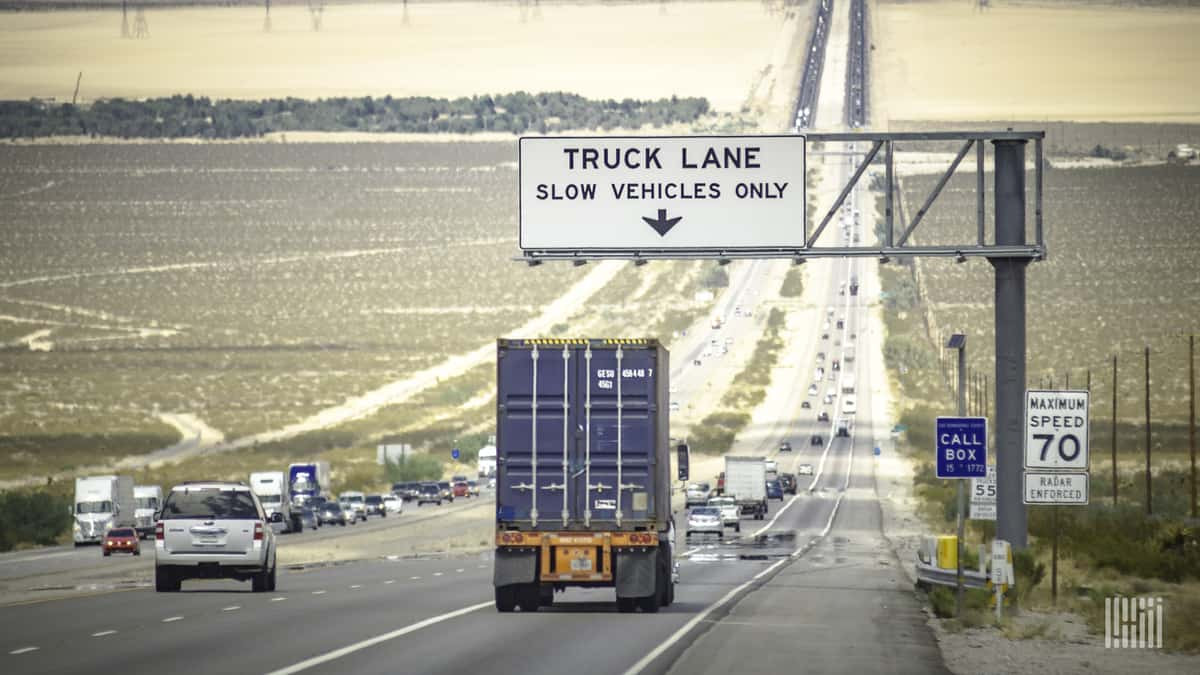Truck lane restrictions play a crucial role in ensuring safety on highways and roads frequented by commercial vehicles. At Get Drivers Ed, we emphasize the importance of understanding these regulations to promote smoother traffic flow and reduce the risk of accidents involving trucks. In this blog post, we'll delve into what truck lane restrictions entail, why they exist, and how drivers can navigate them safely.
What Are Truck Lane Restrictions?
Truck lane restrictions refer to specific lanes on highways or roads designated exclusively for use by trucks or commercial vehicles. These lanes are typically marked with signs indicating restrictions such as "Trucks Only," "Trucks and Buses Only," or "Trucks Prohibited." The aim is to manage traffic more efficiently and enhance safety by separating slower-moving trucks from other vehicles.
Types of Truck Lane Restrictions
Truck-Only Lanes: These are dedicated lanes reserved exclusively for trucks, often found on major highways and interstates to facilitate smoother traffic flow and reduce congestion. These lanes help keep large commercial vehicles separate from smaller passenger vehicles, minimizing the risk of collisions.
Prohibited Lanes: In some areas, certain lanes are designated as off-limits for trucks. These restrictions are usually in place in urban areas or on specific sections of highways where space is limited, or safety concerns are heightened. Signs will clearly indicate where trucks are not allowed.
Limited Access Lanes: In some regions, lanes have restricted access for trucks during specific hours of the day. This is done to manage traffic volume and optimize road usage. For example, trucks may be prohibited from using certain lanes during peak traffic hours to ease congestion for commuter traffic.
Why Do Truck Lane Restrictions Exist?
Truck lane restrictions serve several important purposes:
1. Safety
Separating trucks from smaller vehicles can significantly reduce accidents. Trucks have larger blind spots, longer stopping distances, and require more space to maneuver. By designating specific lanes for trucks, the risk of collisions is minimized, and overall road safety is improved.
2. Traffic Flow
Trucks generally travel at slower speeds than passenger vehicles, especially when loaded with heavy cargo. By allocating lanes specifically for trucks, traffic flow becomes more efficient. Passenger vehicles can move at their speed without being slowed down by trucks, and trucks can maintain a steady pace without frequent stops and starts.
3. Infrastructure Protection
Heavy trucks cause more wear and tear on road surfaces compared to lighter vehicles. By directing trucks to specific lanes, road maintenance can be better managed. This approach helps preserve infrastructure, reducing the frequency and cost of road repairs.
Navigating Truck Lane Restrictions Safely
Understanding and adhering to truck lane restrictions is essential for all drivers, not just truck operators. Here are some tips to navigate these restrictions safely:
1. Read and Follow Signs
Always pay attention to signage indicating truck lane restrictions. These signs provide critical information on which lanes trucks can or cannot use. Compliance with these signs is not only a legal requirement but also a safety measure.
2. Plan Ahead
If you're a truck driver, plan your routes to adhere to truck lane regulations. Familiarize yourself with the restrictions along your route to avoid fines or delays. Use GPS systems that are updated with truck-specific routes to help navigate through areas with lane restrictions.
3. Stay Aware
Be mindful of trucks entering or exiting restricted lanes. Trucks need more space to maneuver, so give them ample room. Avoid driving in a truck's blind spot and always signal your intentions well in advance.
4. Stay Informed
Truck lane restrictions can vary from one jurisdiction to another. Stay updated on local regulations and any changes to ensure compliance. Resources such as state transportation department websites or trucker-specific apps can provide valuable information on lane restrictions.
Conclusion
Truck lane restrictions are crucial for enhancing road safety and traffic efficiency, benefiting both truck drivers and other motorists. At Get Drivers Ed, we prioritize educating drivers on these regulations to promote safe and responsible driving practices. Understanding and respecting truck lane restrictions contribute to a safer driving environment for everyone on the road.
Call to Action
Ready to enhance your knowledge of truck lane restrictions and other essential driving regulations? Enroll in Get Drivers Ed's comprehensive courses today and equip yourself with the skills needed for safe driving. Visit Get Drivers Ed to explore our courses and start your journey toward becoming a safer driver.
By gaining a thorough understanding of truck lane restrictions and learning how to navigate them, drivers can help ensure safer and more efficient travel for everyone on the road.

